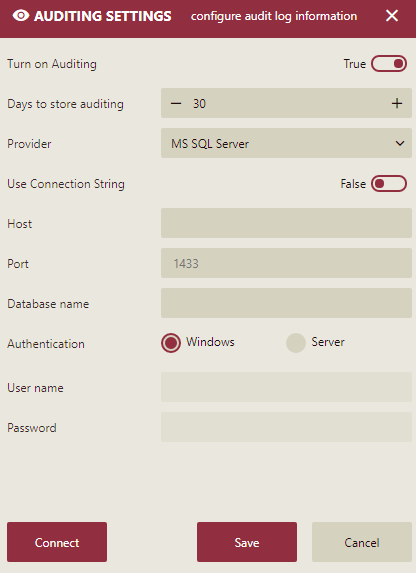Auditing Settings
Auditing allows you to track which reports are accessed and what is done with them.
On the Admin Portal, navigate to Auditing Settings.
Enter information for the settings, described below.

Settings | Description |
|---|---|
Turn on Auditing | Turns on auditing. |
Days to store auditing | Specify the number of days to store audit data. |
Provider | Specify provider for a database in which to store the data – MS SQL Server, MySQL, PostgresSQL, or Oracle. |
Use Connection String | Turns on the Connection string field, if you just want to enter a connection string. |
Host | Enter the name of the host machine on which to store auditing data. |
Port | Enter the port number to use on the host machine. |
Database name | Enter the name of the database in which to store auditing data. |
User name | Enter the user name under which to log in to the database. |
Password | Enter the password to use for logging in to the database. |
Once you provide all the needed information, click Connect and then Save to save it and begin auditing.



